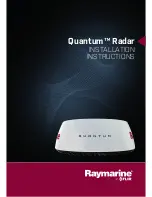
2
Safety and General information
To assure optimal radio performance and make sure human exposure to radio
frequency electromagnetic energy is within the guidelines set forth in the above
standards, always adhere to the following procedures:
ANTENNA CARE
Use only the supplied or an approved replacement antenna. Unauthorised antennas,
modifications, or attachments could damage the radio and may violate FCC regulations.
DO NOT hold the antenna when the radio is “IN USE”. Holding the antenna affects
call quality and may cause the radio to operate at a higher power level than needed.
APPROVED ACCESSORIES
For a list of approved Motorola accessories, look in the accessory section of the service
manual.
ELECTROMAGNETIC INTERFERENCE/COMPATIBILITY
NOTE: Nearly every electronic device is susceptible to electromagnetic interference (EMI)
if inadequately shielded, designed or otherwise configured for electromagnetic
compatibility.
FACILITIES
To avoid electromagnetic interference and/or compatibility conflicts, turn off your radio in
any facility where posted notices instruct you to do so. Hospitals or health care facilities
may be using equipment that is sensitive to external RF energy.
MEDICAL DEVICES
• Pacemakers
The Health Industry Manufacturers Association recommends that a minimum separation of
15 centimetres be maintained between a wireless radio and a pacemaker. These
recommendations are consistent with those of the U.S. Food and Drug Administration.
Persons with pacemakers should:
•
ALWAYS keep the radio more than 15 centimetres from their pacemaker when the
radio is turned ON.
•
turn the radio OFF immediately if you have any reason to suspect that interference is
taking place.
• Hearing Aids
Some digital wireless radios may interfere with some hearing aids. In the event of such
interference, you may want to consult your hearing aid manufacturer to discuss
alternatives.











































